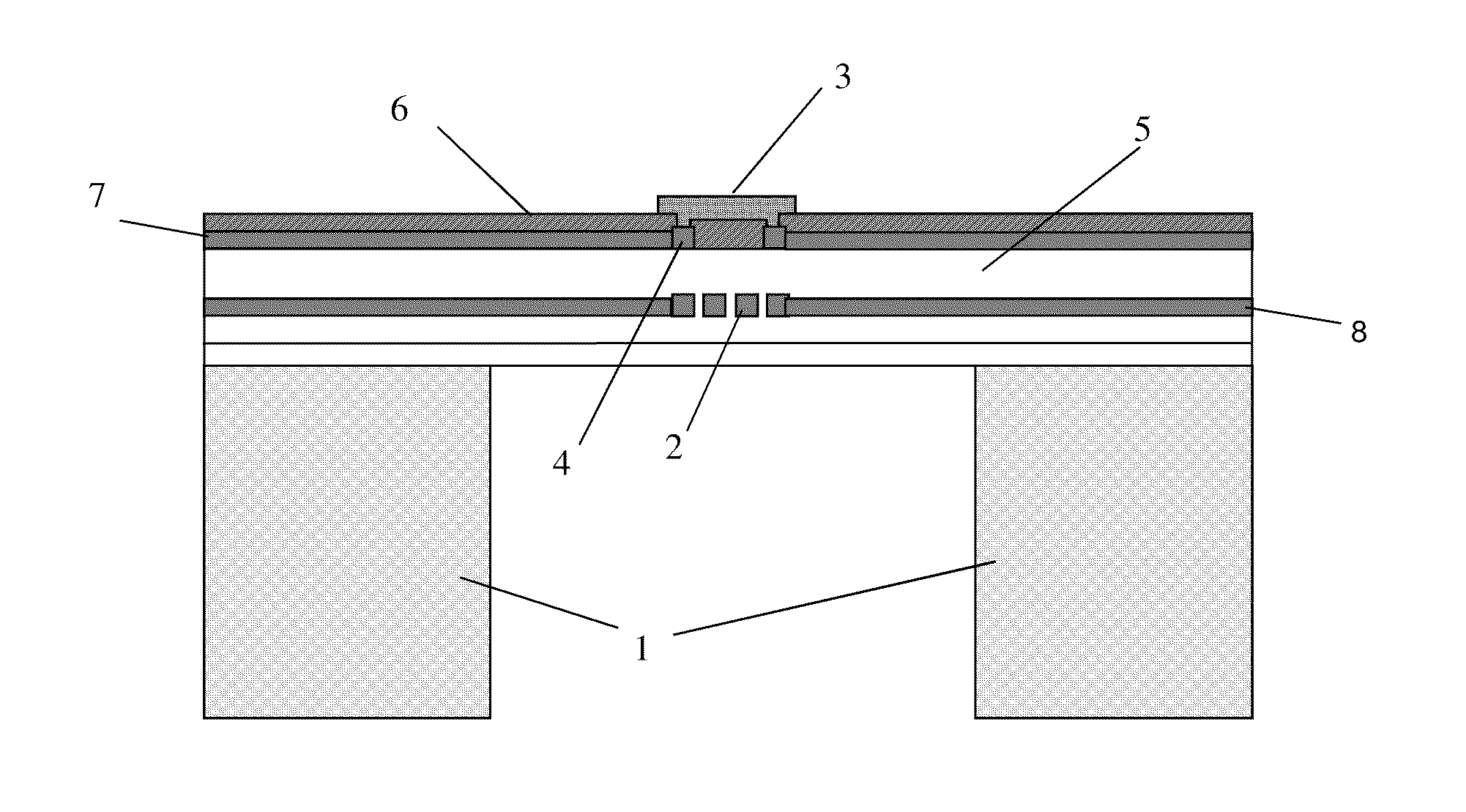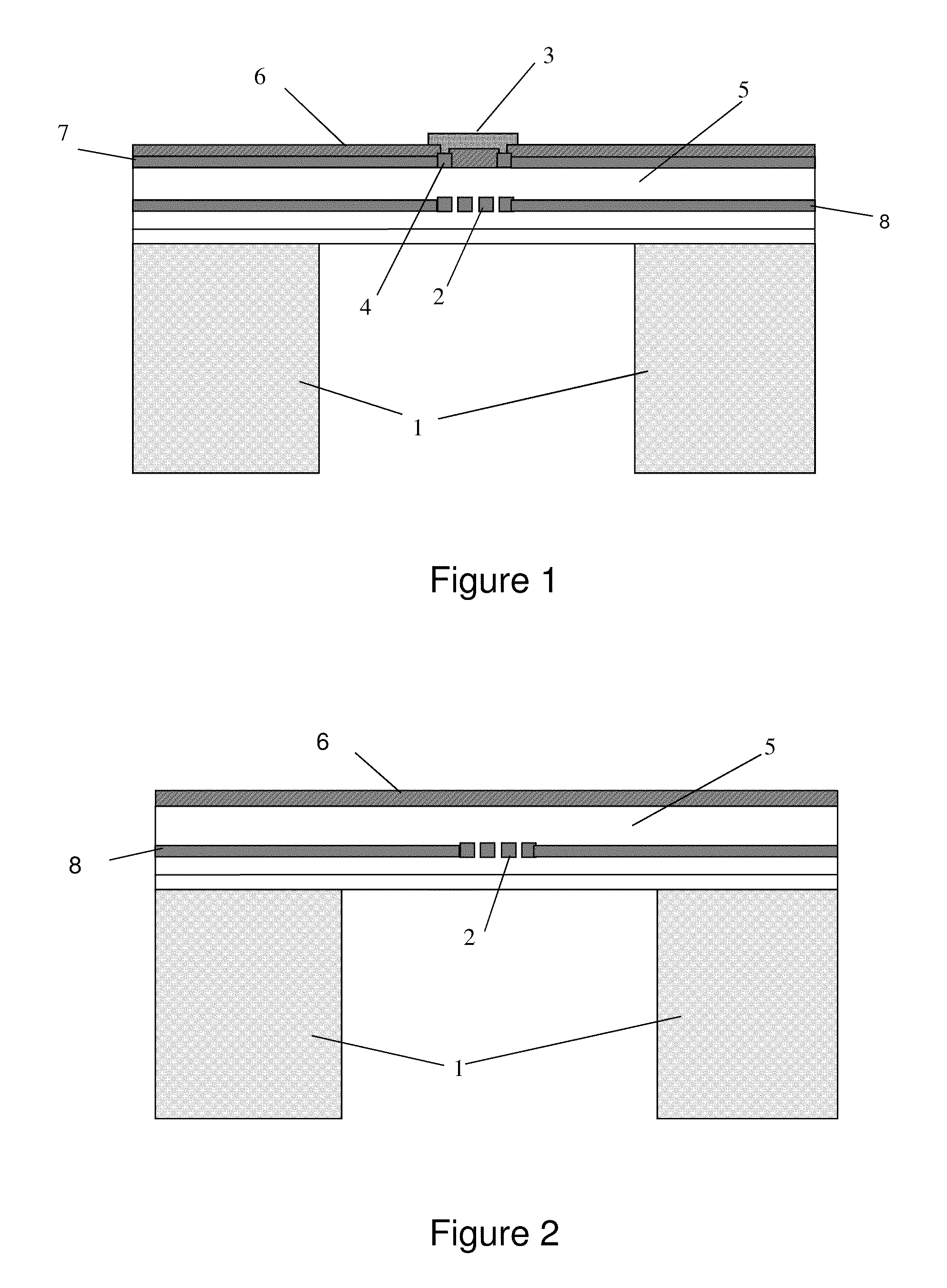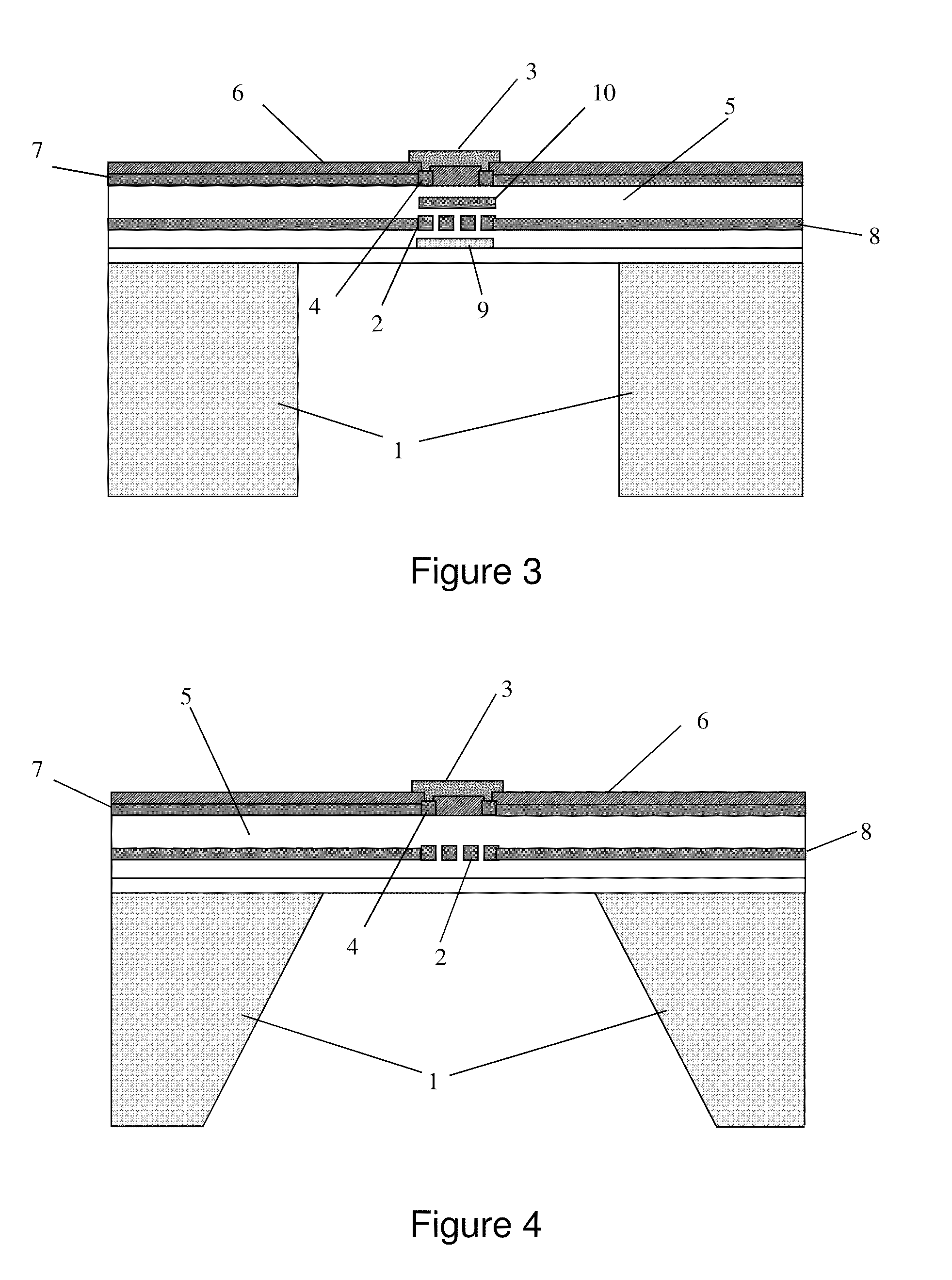Micro-hotplates
a micro-hotplate and hot plate technology, applied in the field of micro-hotplates, can solve the problems of affecting undesirable increase of resistance, failure of devices, etc., and achieve the effect of reducing the effect of electromigration and improving the reliability of micro-hotplates
- Summary
- Abstract
- Description
- Claims
- Application Information
AI Technical Summary
Benefits of technology
Problems solved by technology
Method used
Image
Examples
Embodiment Construction
[0030]FIG. 1 shows a schematic cross section of a micro-hotplate used for applying a bidirectional current. Optionally, the micro-hotplate of FIG. 1 can be used as a gas sensor. There is provided a membrane layer 5,6 which is supported on a silicon substrate 1, the membrane layer consists of dielectric layers 5 and a passivation layer 6. A resistive heater 2 is formed within the membrane layer and connected to the rest of a chip by tracks 8. It will be appreciated that the resistive heater 2 can also be formed optionally above or below the membrane layer. The gas sensing electrodes 4 are formed from a top metal layer 4. The passivation layer 6 above these electrodes 4 has been removed by etching to allow electrical contact with a gas sensing material 3 deposited on top of the membrane layer. The gas sensing electrodes 4 are also connected by tracks 7 to associated circuitry (see description below with reference to FIG. 9).
[0031]The resistive heater 2 may be of any shape, for example...
PUM
| Property | Measurement | Unit |
|---|---|---|
| temperature | aaaaa | aaaaa |
| temperature | aaaaa | aaaaa |
| temperature | aaaaa | aaaaa |
Abstract
Description
Claims
Application Information
 Login to View More
Login to View More - R&D
- Intellectual Property
- Life Sciences
- Materials
- Tech Scout
- Unparalleled Data Quality
- Higher Quality Content
- 60% Fewer Hallucinations
Browse by: Latest US Patents, China's latest patents, Technical Efficacy Thesaurus, Application Domain, Technology Topic, Popular Technical Reports.
© 2025 PatSnap. All rights reserved.Legal|Privacy policy|Modern Slavery Act Transparency Statement|Sitemap|About US| Contact US: help@patsnap.com



